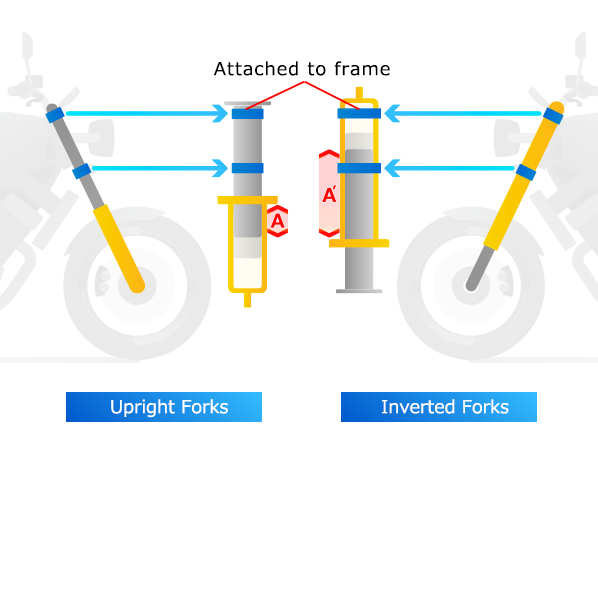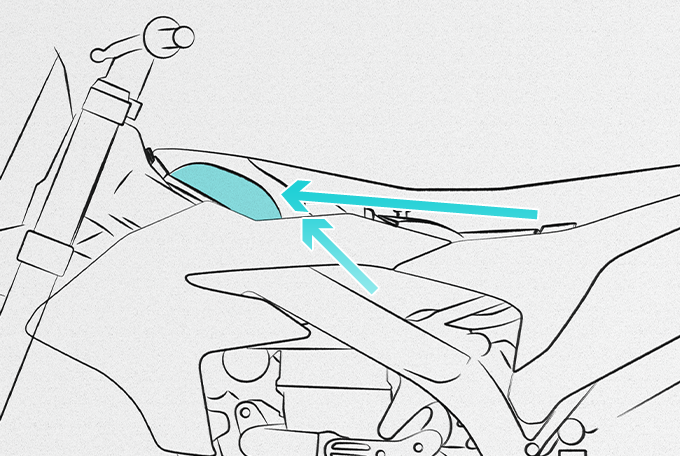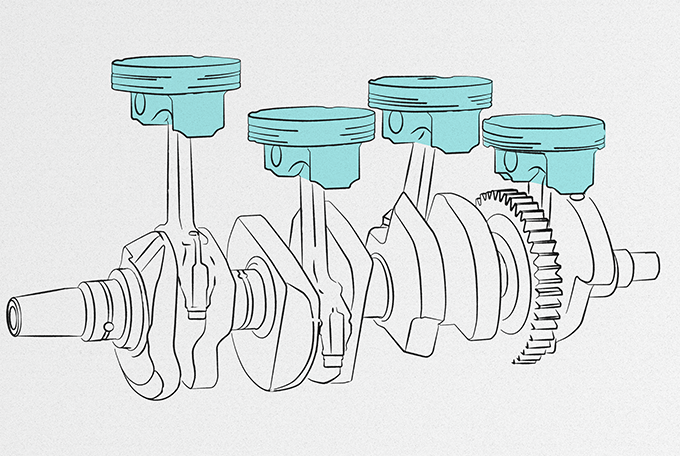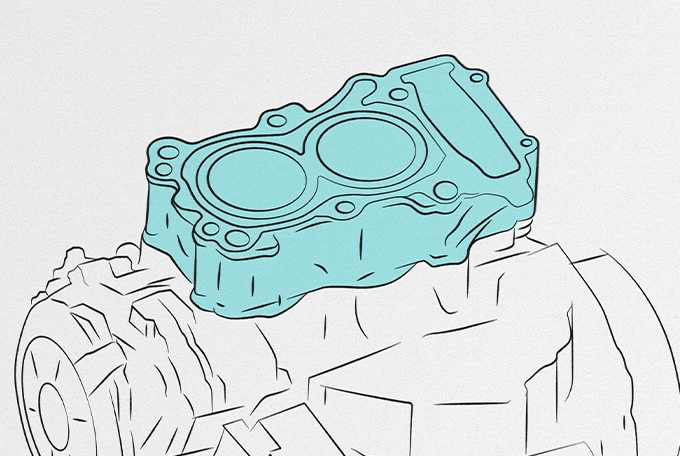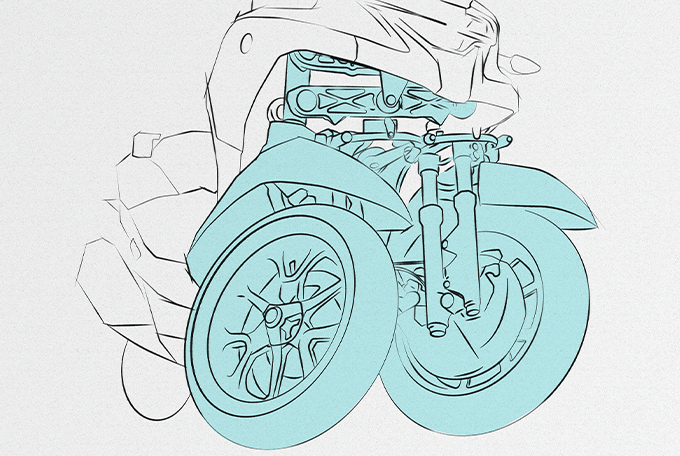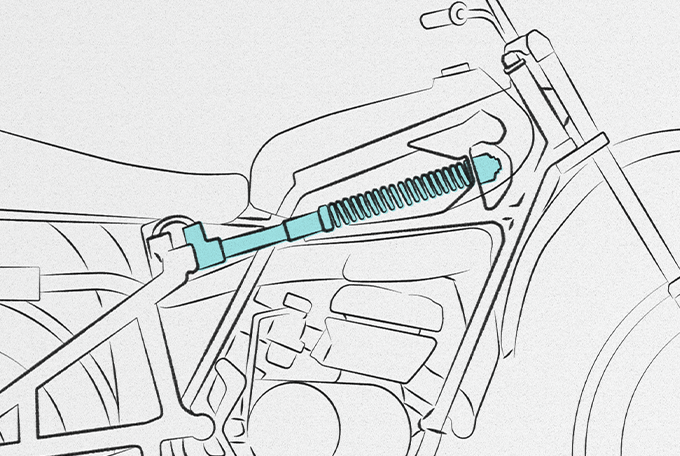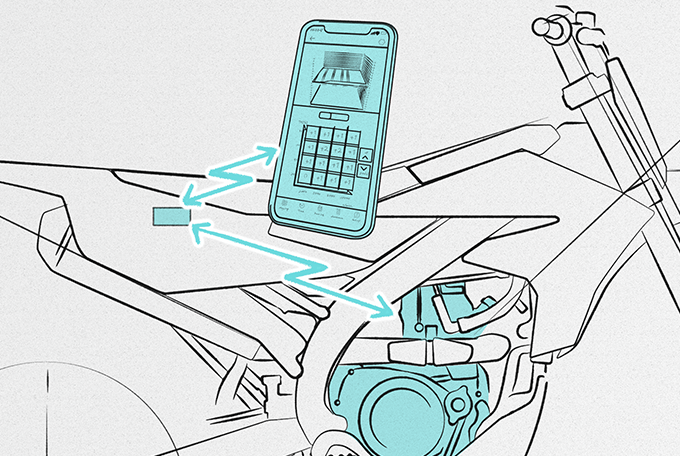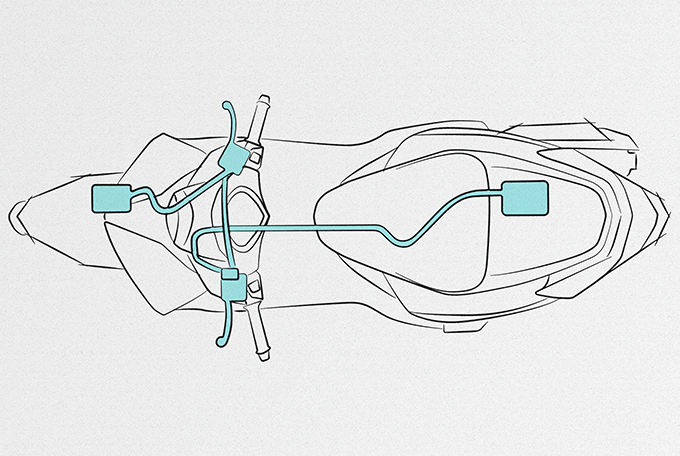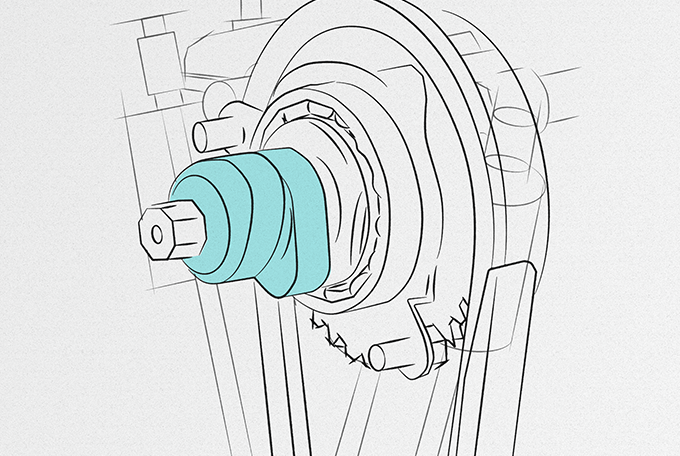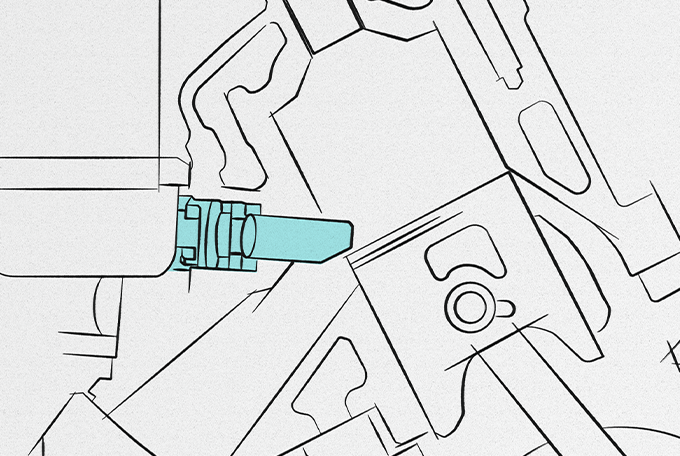Inverted Front Forks
Revs Your Heart – Explore the world of Yamaha motorcycles
Are inverted front forks better than conventional upright ones?
Telescopic front forks get their name from “telescope” because the way they move is similar. These forks are widely used and come in two types: upright and inverted. We’ll describe them using a syringe as an example.
Upright front forks are widely used and have a simple construction that has the inner tubes connecting the suspension to the frame. They are also cost-effective because not as much machining is required for the inner walls of the outer tubes, where cylindrical precision and smooth sliding surfaces are critical. There is also less inner tube surface area requiring plating and the like.
With inverted front forks,the inner tubes are not as exposed because the upper part of the outer tubes is what is attached to the frame. This means the sliding area of the two tubes is greater, as shown in figures A1 and A2. So, the forks have a longer length over which to distribute loads and are more resistant to flex. Also, their outer diameter where they attach to the frame is thicker, so their attachment to the chassis is stronger.
For these reasons, inverted forks make the front end of a bike more rigid, which brings good handling and a good feedback from road at. Riders can feel this chassis rigidity when cornering or braking.
However, it is hard to claim one type of fork is “better” than the other. This is because you can’t talk about suspension performance without including the role of a fork’s internal springs that actually absorb (dampen) the energy from impacts from the road surface.
